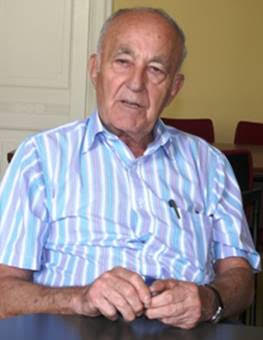
THE VOICE OF INTERNATIONAL LITHUANIA
|
VilNews has its own Google archive! Type a word in the above search box to find any article.
You can also follow us on Facebook. We have two different pages. Click to open and join.
|
Author Archive
- Posted by - (0) Comment
Gediminas’ Tower,
the symbol of Lithuania

Photos: Aage Myhre
Gediminas' Tower (Lithuanian: Gedimino pilies bokštas) is the only remaining part of the Upper Castle in Vilnius, Lithuania.
The first fortifications were built of wood by Duke of the Grand Duchy of Lithuania, Gediminas. Later the first brick castle was completed in 1409 by Grand Duke Vytautas. Some remnants of the old castle have been restored, guided by archeological research.
It is possible to climb to the top of the hill on foot or by taking a funicular. The tower houses an exposition of archeological findings from the hill and the surrounding areas. It is also an excellent vantage point, from where the panorama of Vilnius' Old Town can be admired.
Gediminas' Tower is an important state and historic symbol of the city of Vilnius and of Lithuania itself. It is depicted on the national currency, the litas, and is mentioned in numerous Lithuanian patriotic poems and folk songs. The Flag of Lithuania was re-hoisted atop the tower on October 7, 1988, during the independence movement that was finalized by the Act of the Re-Establishment of the State of Lithuania on March 11, 1990.
The Castle Hill surrounded by rivers was a convenient location to build a castle and establish a bigger settlement. Archaeological investigations have revealed that there had already been a settlement on the Castle Hill in the Neolithic. In the 9th century, the hill was reinforced with wooden and stone fences, whereas in the 11th-13th centuries a wooden castle had already been erected. The early history of the castle is closely related to the history of the development of the city.
During the reign of Grand Duke of Lithuania Gediminas, Vilnius was already known as the capital of the Grand Duchy of Lithuania, and the Vilnius Castle was mentioned for the first time in the 1323 treaty between Gediminas and the Teutonic Order. Often the Higher Castle is referred to as the Gediminas Castle. During the reign of the first rulers from the Gediminas dynasty the Vilnius Higher Castle was of great significance not only as a political centre of the Grand Duchy of Lithuania, but also as a constituent element of the defensive complex of the capital (together with the Lower and Crooked Castles) that withstood an intensified attack of the Teutonic Order during the second half of the 14th century. When a fire destroyed the wooden castle, a brick castle was constructed during the reign of Grand Duke of Lithuania Vytautas at the beginning of the 15th century. The remains of the brick castle have survived until the present day.
Eventually, as the situation in the state changed, the castle lost its purpose and subsequent fires and wars, after which it was not repaired, devastated the castle. During 1610-1613, a prison functioned in the basement of the castle, whereas the Higher Castle was last used as a defensive fortress during the war in 1655-1661. The Muscovite army was temporarily settled in the castle. Afterwards, the castle was completely desolated and was slowly disintegrating and declining.

The defensive functions of the castle were brought to light in the 19th century, when a fortress was established in the territory of Vilnius castles following the order of the Tsar of Russia in 1831. The ruins of the Higher Castle were also taken care of, i.e. the remains of the southern and northern towers of the Higher Castle as well as its western and northern walls were demolished, the masonry was conserved, and a sloping Castle Hill was reinforced. In 1838, a wooden two-storey structure of optical telegraph was erected on top of the western tower. When the fortress was removed from the territory of Vilnius castles, a new road was built on the slope of the Castle Hill in 1896, the slopes were planted with trees, and a café was opened in the western tower. During the interwar period, the conservation works were carried on.
When Lithuania restored its state in 1918, the flag of Lithuania was first hoisted on the Gediminas Castle Hill on January 1, 1919. Unfortunately, this was not for long. Vilnius region was occupied by the Polish and only on October 29, 1939 the tricolour of Lithuania was hoisted again on the castle tower. During the World War II the western tower of the castle was damaged badly.

After the war, although Lithuania was occupied by the Soviet Union, the tower was rebuilt and, in 1960, when the territory of the hill was arranged and the fragments of the castle buildings were conserved, the Castle Museum was opened in the western tower.
From 1968, the museum became the subdivision of the National Museum of Lithuania (at that time, the Museum of History and Ethnography). When the Lithuanian National Revival began, the flag of Lithuania was once again hoisted on the castle tower on October 7, 1988, whereas in 1995, when the castle tower was renovated, a renewed exposition opened its doors to visitors. A picturesque panorama of the capital of an independent Lithuania opens up from the scenic overlook installed on the top of the tower. The castle tower together with the flag of the Lithuanian state became the symbol of national struggles for independence and statehood.

- Bookmark :
- Digg
- del.icio.us
- Stumbleupon
- Redit it
- Posted by - (0) Comment
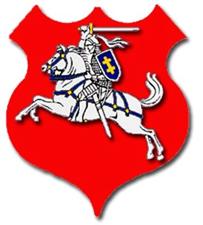
Vytis tail up or
Vytis tail down?
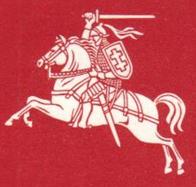

Rimgaudas Vidziunas
*Question* Vytis tail up or Vytis tail down? Have you ever noticed? Can anyone answer the symbolism? Thank you...

Irene Simanavicius Hmmmm..scratching my chin. The one I have at home the tail is down. what does it mean?

Frank Passic Even horses have to relieve themselves....

Darius Udrys Quick! Who can think of a discussion that would be an even bigger waste of time?

Darius Udrys Quick! Who can say something even more bathetic?

Darius Udrys Quick! Who should consult a dictionary?

Darius Udrys Who made you the boss of the internet?

Darius Udrys http://www.balsas.lt/m/naujiena/572579

Lietuvos žvaigždelės ir krūvelės | Balsas.lt mobili versija
www.balsas.lt
Šįmet kalbėta, kad statinys labai svarbus – juk Lietuva 2013 metų antroje pusėje pirmininkaus Europos Sąjungai (ES).

Bernard Terway Darius - what kind of a point are you trying to make? Your comments are simply stupid. I can think of something more "bathetic" in a split second. That is you.

Darius Udrys Oh, what wit! It's been a while since I've heard one from the "yo mama" series of rejoinders.

Merry Kay Aldonis I learned that whenever you see an elephant with his tail up, it meant either good luck or something very strong and vigor about it.

Merry Kay Aldonis I have a Lithuanian/English Dictiionary, but it does not say anything about tail

Virginia Pudinas Schoenfeld It's the elephants trunk Merry Kay. Not his tail. I think the tail on the horse just depends on the artists mood.

Merry Kay Aldonis Virginia Pudinas Shoenfeld you are ABSOLUTELY Correct!!

Merry Kay Aldonis In penmanship and writing analysis, they used to say that if you ended sentences or signatures with the last letter curving upward, always meant more of a positive nature.

Vytas Levickis After Independence there was confusion in Lithuania when the Vytis was depicted with the tail down. Now officially the Vytis has its tail up. This is the opposite to the Belarus Pahonia, the official coat of arms of Belarus from 1991 to 1995, which is nearly identical to the Vytis, but has its tail down. Both depict a charging knight on horseback

Darius Udrys My coworker says that in high school her history teacher made them discuss this issue and it was even a question on the test. Super. Next, why don't we discuss whether the left rear hoof should be ahead of or behind the right one?

Vijole Arbas then there is the question of the angle at which the knight holds his head high.
- Bookmark :
- Digg
- del.icio.us
- Stumbleupon
- Redit it
- Posted by - (0) Comment
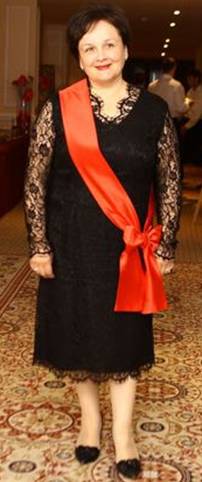
Laima Andrikiene as opposition leader?
Lithuanian MEP Laima Andrikiene has also decided to vie for the position of chairman of the largest opposition party Homeland Union – Lithuanian Christian Democrats.
„It was not easy to make up my mind but I don't want to and cannot disappoint people who trust me as I received 88,840 priority points during the 2009 EP elections. This number of citizens of our state wanted me to represent them in the European Parliament. Compared to the 2004 EP elections, the number of my voters increased by over 18,000 (18,556), or 26 percent! I was elected into the European Parliament after receiving 70,284 priority points,“ Andrikiene said in a statement sent to BNS.
Read more...
- Bookmark :
- Digg
- del.icio.us
- Stumbleupon
- Redit it
- Posted by - (0) Comment
My encounter with the Dalai Lama
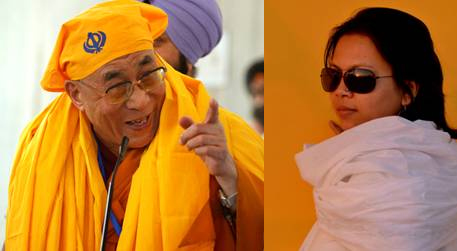
Madhurkankana Roy about her meeting
with Dalai Lama in Delhi last Sunday:
There was immense positivity felt in the room. His graceful presence ushered in happiness, a smile on everyone’s face. Awestruck by his presence, the energy generated was beyond comprehension.
|
My good friend in New Delhi, India, Madhurkankana Roy, told me with excitement last Sunday that she had met the Dalai Lama that same day and had been holding his hands not once but twice. His Holiness had come to India to participate in the celebration of Swami Vivekananda*, the Indian Hindu monk who was the key figure in the introduction of Indian philosophies of Vedanta and Yoga to the western world more than 100 years ago. I asked her to write down her thoughts and feelings after the meeting, so here they are, her warm and sensitive considerations after her encounter with the world’s spiritual leader ... Read more about Swami Vivekananda at http://en.wikipedia.org/wiki/Swami_Vivekananda |
“Smile Legacy”
By Madhurkankana Roy. New Delhi, India
The legacy of Swami Vivekananda is relevant to India at a time when the Indian society in particular and world at large is redefining itself to changing times and becoming more just and equitable.
Commemorating 150th birth anniversary celebrations of Swami Vivekananda, the Indian Council for Cultural Relations had organised for an interfaith conference titled 'One World Religions: Diversity, Not Dissension’ to understand the essence of religious faiths and how ‘Religion should be a weapon for self-transformation as well as transformation of the society’ in this age of religious animosities.
- Bookmark :
- Digg
- del.icio.us
- Stumbleupon
- Redit it
- Posted by - (0) Comment
My encounter with the Dalai Lama
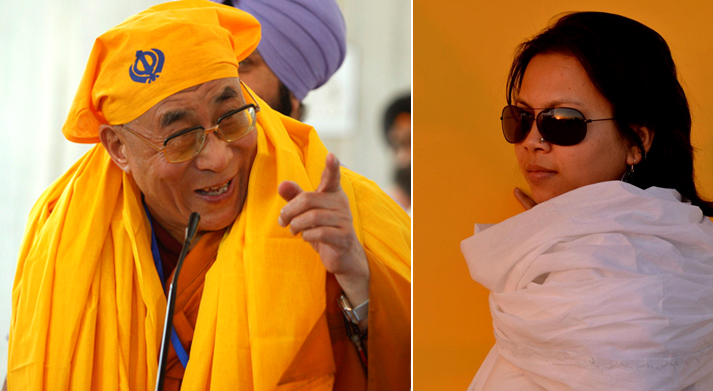
Madhurkankana Roy about her meeting with Dalai Lama in Delhi last Sunday:
There was immense positivity felt in the room. His graceful presence ushered in happiness, a smile on everyone’s face. Awestruck by his presence, the energy generated was beyond comprehension.
|
My good friend in New Delhi, India, Madhurkankana Roy, told me with excitement last Sunday that she had met the Dalai Lama that same day and had been holding his hands not once but twice. His Holiness had come to India to participate in the celebration of Swami Vivekananda*, the Indian Hindu monk who was the key figure in the introduction of Indian philosophies of Vedanta and Yoga to the western world more than 100 years ago. I asked her to write down her thoughts and feelings after the meeting, so here they are, her warm and sensitive considerations after her encounter with the world’s spiritual leader ... Read more about Swami Vivekananda at http://en.wikipedia.org/wiki/Swami_Vivekananda |
“Smile Legacy”
By Madhurkankana Roy. New Delhi, India
The legacy of Swami Vivekananda is relevant to India at a time when the Indian society in particular and world at large is redefining itself to changing times and becoming more just and equitable.
Commemorating 150th birth anniversary celebrations of Swami Vivekananda, the Indian Council for Cultural Relations had organised for an interfaith conference titled 'One World Religions: Diversity, Not Dissension’ to understand the essence of religious faiths and how ‘Religion should be a weapon for self-transformation as well as transformation of the society’ in this age of religious animosities.
Spread out over three days, the conference had magnanimous personalities in the likes of His Holiness Dalai Lama, Maulana Wahiduddin Khan, Rev Mpho Tutu, Dr.Karan Singh and others following nine different faiths, address member audience.
My association with the Conference happened at a professional level. Initially it was more like any other conference organised by ICCR and that my participation would solely be for coordination purpose. With much work to finish I was not really looking at some spiritual upliftment of the self. It was more like a task to be finished successfully. However things started moving at a different pace as the conference gradually moved towards the Valedictory function on the 9th of March 2013.
I was asked to be at the reception for receiving guests. The multipurpose Hall of India International Centre was almost full. The fully packed house reverberated with anticipation, eagerness of people wanting to listen to His Holiness Dalai Lama. As the clock struck 10, the fleet of security vehicles arrived, and after them followed a white sedan. It stopped just in front of the Hall. A man stepped out of the car. People flocked towards him. His Holiness had arrived. I had once read somewhere that his mere presence has touched and transformed millions of lives. Perhaps I was one of them. I was awestruck by his presence. I did not know how to react. His aura almost pushed me to a trance like state for a few moments, until I felt a sudden adrenaline rush and I walked towards him. Amidst the crowd, I saw him smiling at me. He forwarded his right hand. I looked at his eyes and his eyes spoke to me. They had the expression “I am glad to meet you”. I felt blessed.
And he walked ahead of me. I followed.
There was immense positivity felt in the room. His graceful presence ushered in happiness, a smile on everyone’s face. Awestruck by his presence, the energy generated was beyond comprehension. Like the Buddha himself, His Holiness too, with his ever-smiling face, reaches out to people in ways that connect to their individual mental dispositions, abilities, and everyday realities.
His Holiness spoke about Buddhism, co-existence with other faiths, self criticism and reasoning. As was discussed in the Conference, his main concern along with others present there, was how to arrive at a common platform of universal brotherhood. He emphasised on Love and Compassion as the primary weapon to win hearts across the globe. Indeed everyone of us sitting there that day were hit by the weapon of his smiling face. The radiance of his compassionate face transported us to a different level of consciousness. His humour is the hallmark of His Holiness and speaking in plain simple English, without mincing words, he made the philosophy of life and living so easily understandable. His words weighed and deep and yet so light that they seemed to be flying up to the shining eternity.
My short stint with His Holiness made a huge impact on me. His presence, shaking hands, infused some kind of calmness in me. My unstable, restless mind, felt a kind of peace within, that it was almost like a healing touch. His smile was infectious! I carried it forward, as if I had to preserve and promote his legacy to share a smile as long as I lived.
--
When you are motivated by the desire to transcend suffering, to get out of a difficult situation, and to help others to do the same, you become a powerful source of energy that helps you to do what you want to do to transform yourself and to help people.
- Bookmark :
- Digg
- del.icio.us
- Stumbleupon
- Redit it
- Posted by - (0) Comment
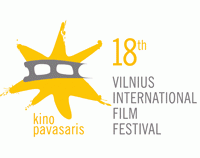
Dustin Hoffman's 'Quartet' Kicks Off Vilnius International Film Festival
The 18th edition of the festival will feature American independent cinema, short films and the "New Europe — New Names" competition.
The 18th edition of the Kino Pavasaris Vilnius International Film Festival (March 14-28) started Thursday in Lithuania’s capital Vilnius, with select screenings in Kaunas, the country’s second-largest city. The festival opened with Quartet, the Golden Globe-nominated comedy directed byDustin Hoffman, and will close with the Hungarian film Final Cut -- Ladies & Gentlemen, directed by Gyorgy Palfi.
Read more...
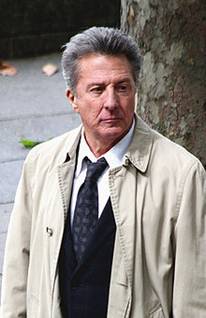
- Bookmark :
- Digg
- del.icio.us
- Stumbleupon
- Redit it
- Posted by - (0) Comment

VIC Meeting Wednesday 13 March at 18:00
Is the KGB still
walking among us?
Place: Vilnius Jewish Library, Gedimino 24-9
Speaker: MP Dr. Arvydas Anušauskas

The KGB – the intelligence service of the Soviet Union – was dismantled in October 1991. Ever since, each publication of a new document – lists of reservists or KGB agents, or testimonies on the activity of Soviet agents – by the Genocide and Resistance Research Centre in Lithuania provokes a flood of reactions: the centre’s website (www.genocid.lt) very quickly freezes up under the heavy traffic of visitors…
More information HERE!
- Bookmark :
- Digg
- del.icio.us
- Stumbleupon
- Redit it
- Posted by - (1) Comment
|
VIC
|
|
Is the KGB still walking VIC meeting (free entry)
Background reading:
|
|
VIC Wednesday 13 March, 18:00
Arvydas Anušauskas (born 29th September 1963 in Vilnius) is a Lithuanian historian, writer, screenwriter, public and political activist.
1983-1985 studied at Vilnius University, Department of History
Arvydas Anusauskas investigates the history of terror, genocide and secret service. Also, he is the author and co-author of 26 books that published around 90 studies and articles in scientific journals of Lithuania, Poland, Latvia, France and Germany. From 1989 there are more than 100 articles published in Lithuanian periodicals.
|
- Bookmark :
- Digg
- del.icio.us
- Stumbleupon
- Redit it
- Posted by - (1) Comment
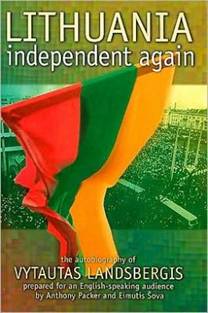
11 March 1990, the day Lithuania woke up from its 50 year nightmare
Lithuania’s independence declaration of 11 March 1990 was signed by wise and courageous political leaders who did not want to accept that their beloved homeland should remain occupied. They deserve our respect and gratitude!
Read more…
__________________________

Judita Gliauberzonaite
Please, don't exaggerate - it wasn't all a nightmare.
__________________________
Vytautas Sliupas
Dear Judita you look so young in your picture, maybe too young to remember the nightmare.
__________________________

Evaldas Zvinys
Judita - I understand what you are saying. But IMHO you might hurt some people's feelings: by analogy someone could say that a Nazi or a Gulag camp was not all a nightmare - but normally people just do not say that. Su Švente!
__________________________

Vijole Arbas
I laud all our brave patriots who are not afraid to live in their own country and build it to its potential.
__________________________

Jenifer C. Dillis
"Lietuva! Lietuva! Lietuva!"
__________________________

Aage Myhre
You know, Judita Gliauberzonaite, it was after the 11 March event in the Lithuanian Parliament in 1990 that I first became aware that my home country Norway had a forgotten neighbouring country called Lithuania. In the summer of 1990 I had my first ever encounter with Lithuanians, and in November that same year I came here for the first time. I met many of those who had signed the Declaration of Freedom 11 March and was impressed with their determination, but also the significant nervousness they felt in the months leading up to the Soviet Union's disastrous assault against Lithuania in January 1991. I maintain that this was, and is, people who deserve our thanks and respect!
__________________________

Petter Kinn
As you know, dearest Aage Myhre, we were also rather early! I agree with you!
__________________________

Irene Simanavicius
joyous.
__________________________

Warren Thompson
Back in the USSR??? JOKIU BUDU!
__________________________

Boris Bakunas When I was young, I thought I would never live to see that day. Now believe anything is possible. And when it comes to defending liberty, that goes double for Lithuanians. After all, we've had over a thousand years of practice.
- Bookmark :
- Digg
- del.icio.us
- Stumbleupon
- Redit it
- Posted by - (0) Comment

Copenhagen mayor lends support to gay Lithuanians
Following a request from gay rights activists, Copenhagen Mayor Frank Jensen urges Vilnius Mayor Arutras Zuokas to support Baltic Pride parade.
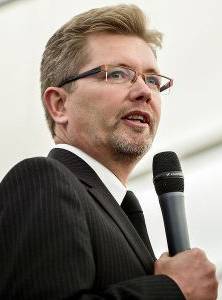
Copenhagen Mayor Frank Jensen pointed to the success of the annual Copenhagen Pride parade, which attracts thousands of LGBT supporters each year
(Photo: Scanpix)
Copenhagen's mayor, Frank Jensen (Socialdemokraterne) showed his support for international gay rights last week in Vilnius, Lithuania.
After the advocacy organisation Association Lithuanian Gay League (LGL) asked Jensen to advocate for the 2013 Baltic Pride Parade, Jensen wrote an open letter to Arturas Zuokas, the mayor of the Lithuanian capital, requesting his support for the event.
As LGL explained, the municipality had granted permission for the parade to proceed but denied participants from marching through downtown Vilnius, citing “security concerns.”
In his letter, Jensen urged Zuokas to allow the parade access to central Vilnius in order to increase public visibility and awareness of the event. Jensen pointed to Copenhagen’s own Pride Parade as an integral part of gay rights efforts.
Read more…
- Bookmark :
- Digg
- del.icio.us
- Stumbleupon
- Redit it
- Posted by - (5) Comment
11 MARCH 1990
THE DAY LITHUANIA WOKE UP
FROM ITS 50 YEAR NIGHTMARE
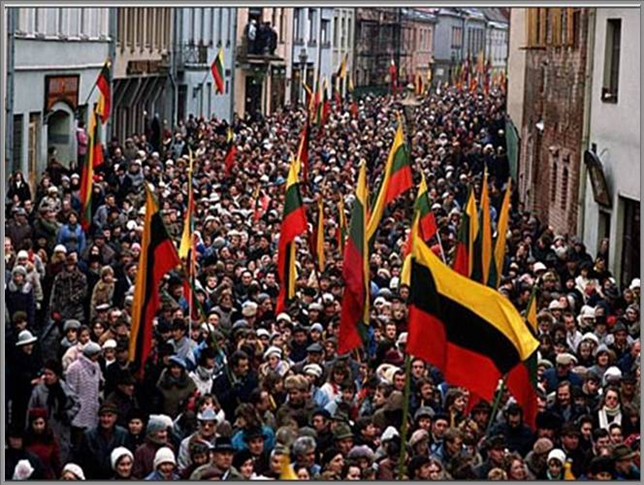
Lithuanians rejoice over their newfound independence, 11 March 1990.
Here from Pilies Street in Vilnius Old Town.
By Aage Myhre, Editor in Chief
aage.myhre@VilNews.com
11 March 1990 is one of the most important days in Lithuanian history. It was on this day 23 years ago that the Lithuanian parliament declared renewed freedom and independence for Lithuania, after the country had been occupied by the Soviet Union since World War II. 124 Parliament delegates voted for the declaration, while six were absent.
In that same session, the Parliament elected Professor Vytautas Landsbergis, the leader of the liberation movement Sajūdis, as Parliament President. He won over the Communist Party leader Algirdas Brazauskas with a 91 to 38 vote.
11 March 1990 became a milestone in Lithuania's history because the Lithuanian politicians that day clearly demonstrated the country’s willingness to again become free and independent. Although it took another 18 months before the international community approved the nation’s independence from the Soviet occupying power, it was the 11 March actions that made it clear to the world that Lithuania no longer accepted to be incorporated into a system and a Commonwealth it had been involuntarily incorporated into when the World War II drew to an end.
11 March 1990 was in many ways the day when Lithuania’s new freedom began, and we must believe that this country now will remain free and sovereign forever, based on democratic principles and values corresponding to those having been developing in Western Europe after World War II ended in 1945.
I can very well imagine that many of the 1990 politicians signed the declaration act with trembling pens. They knew what power they challenged, and were fully aware of what reprisals they and the people they represented could expect from the big bear in the east. The Soviet Union was not a superpower to tease or irritate, and they knew that they would not be treated with kid gloves if the bear decided to strike back, reacting to the severance requirement they signed that day.
But they signed. They were brave. Without their signatures on the document shown below, it is quite possible that Lithuania, Latvia and Estonia still today would be unfree republics under the 'protective' bear paws.
Lithuania’s independence declarations of 1918 and 1990 were both signed by wise and courageous political leaders who did not want to accept that their beloved homeland should remain occupied.
They deserve our respect and gratitude!
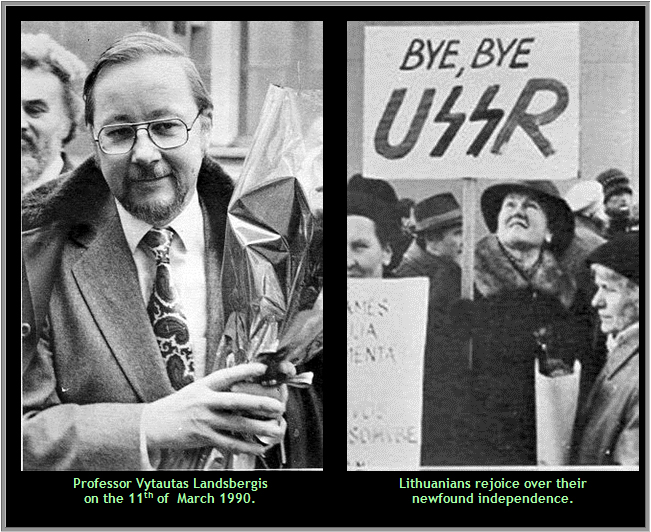

ABOVE: Seimas, 11 March 1990, the day Lithuania re-claimed its independence.
BELOW: The same Parliament Hall today.
11 March 1990
11 March 1990 is one of the most important days in Lithuanian history. It was on this day 23 years ago that the Lithuanian parliament declared renewed freedom and independence for Lithuania, after the country had been occupied by the Soviet Union since World War II. 124 Parliament delegates voted for the declaration (copy below), while six were absent.
In that same session, the Parliament elected Professor Vytautas Landsbergis, the leader of the liberation movement Sajūdis, as Parliament President. He won over the Communist Party leader Algirdas Brazauskas with a 91 to 38 vote.
11 March 1990 became a milestone in Lithuania's history because the Lithuanian politicians that day clearly demonstrated the country’s willingness to again become free and independent. Although it took another 18 months before the international community approved the nation’s independence from the Soviet occupying power, it was the 11 March actions that made it clear to the world that Lithuania no longer accepted to be incorporated into a system and a Commonwealth it had been involuntarily incorporated into when the World War II drew to an end.
11 March 1990 was in many ways the day when Lithuania’s new freedom began, and we must believe that this country now will remain free and sovereign forever, based on democratic principles and values corresponding to those having been developing in Western Europe after World War II ended in 1945.
While this March day 23 years ago was the beginning of the new time in and for Lithuania, the day was also symbolising that nearly 200 years of tragedies of and for this country had come to a final end.
Through more than 500 years, from the 1200s when King Mindaugas declared Lithuania one nation, until it was occupied by the Russian Empire in 1795, Lithuania had been a proud and free nation, through some 300 years also one of the world’s greatest powers, stretching from the Baltic to the Black Sea (known as the Grand Duchy of Lithuania).
The 123 years of occupation from 1795 to 1918, however, became a long and sad chapter for Lithuania, since much of the good qualities this nation once represented in the world community were attempted to be systematically broken down by the Russian Empire occupants.
When Lithuania at the end of World War I (1914-1918) on 16 February 1918 again could declare itself a free nation, most Lithuanians probably believed that the newly won freedom would remain, but sadly, the new freedom lasted only for 22 years. Vilnius and the surrounding area was occupied by Poland already in 1920 and remained under Polish rule until the Second World War started in 1940, and Kaunas was therefore the capital of Lithuania for the years 1920 – 1940.
Nevertheless, Lithuania grew to become a strong nation during the interwar years, guided by, among others, the most famous Lithuanian leader of those days, President Antanas Smetona.
World War II and the years just after became extremely tragic for Lithuania, when the nation was torn apart under alternate German and Russian occupation, and virtually all the large Jewish population was wiped out, and Lithuania thereby lost a population group that had meant so much for this nation since the 1300s.
Also, during the war, tens of thousands of Lithuanians fled to the west, many who today live in the United States, Australia and other countries. Lithuanians were also exposed to extremely tragic abuse from Stalin's Soviet troops and his secret police (known as the KGB), when more than a hundred thousand Lithuanians were deported to Siberia and other areas in the Soviet Union where many of this country’s great citizens were killed or died during very shameful and cruel conditions.
Already during the WWII years a strong resistance movement occurred, known as the Forest Brothers, who until the middle of the 1950s fought a heroic struggle against the Soviet power from their hiding places in the Lithuanian forests. It is suggested that around 20,000 Lithuanians and 70,000 soldiers from Stalin's Red Army and the KGB were killed during those post-war years.
Lithuania became in 1990-1991 the first country that managed to detach itself from the Soviet Union. Latvia and Estonia followed soon after. We should all today be proud that this little country so bravely dared to stand up against the powerful Soviet powers. We should all be extremely happy that this little nation again enjoys freedom and democracy under the principle of equality for all its citizens, and we should be happy about the fact that 11 March 1990 was the day when Lithuania could finally put behind itself nearly 200 years of atrocities and suffering for its people – a people that had deserved so much better due to its proud history.

The Lithuanian Independence Act from 11 March 1990.
- Bookmark :
- Digg
- del.icio.us
- Stumbleupon
- Redit it
- Posted by - (0) Comment
11 MARCH 1990
THE DAY LITHUANIA WOKE UP
FROM ITS 50 YEAR NIGHTMARE
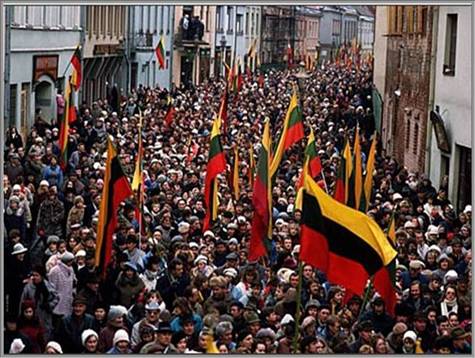
Lithuanians rejoice over their newfound independence, 11 March 1990.
Here from Pilies Street in Vilnius Old Town.
By Aage Myhre, Editor in Chief
aage.myhre@VilNews.com
11 March 1990 is one of the most important days in Lithuanian history. It was on this day 23 years ago that the Lithuanian parliament declared renewed freedom and independence for Lithuania, after the country had been occupied by the Soviet Union since World War II. 124 Parliament delegates voted for the declaration, while six were absent.
In that same session, the Parliament elected Professor Vytautas Landsbergis, the leader of the liberation movement Sajūdis, as Parliament President. He won over the Communist Party leader Algirdas Brazauskas with a 91 to 38 vote.
11 March 1990 became a milestone in Lithuania's history because the Lithuanian politicians that day clearly demonstrated the country’s willingness to again become free and independent. Although it took another 18 months before the international community approved the nation’s independence from the Soviet occupying power, it was the 11 March actions that made it clear to the world that Lithuania no longer accepted to be incorporated into a system and a Commonwealth it had been involuntarily incorporated into when the World War II drew to an end.
11 March 1990 was in many ways the day when Lithuania’s new freedom began, and we must believe that this country now will remain free and sovereign forever, based on democratic principles and values corresponding to those having been developing in Western Europe after World War II ended in 1945.
I can very well imagine that many of the 1990 politicians signed the declaration act with trembling pens. They knew what power they challenged, and were fully aware of what reprisals they and the people they represented could expect from the big bear in the east. The Soviet Union was not a superpower to tease or irritate, and they knew that they would not be treated with kid gloves if the bear decided to strike back, reacting to the severance requirement they signed that day.
But they signed. They were brave. Without their signatures on the document shown below, it is quite possible that Lithuania, Latvia and Estonia still today would be unfree republics under the 'protective' bear paws.
Lithuania’s independence declarations of 1918 and 1990 were both signed by wise and courageous political leaders who did not want to accept that their beloved homeland should remain occupied.
They deserve our respect and gratitude!
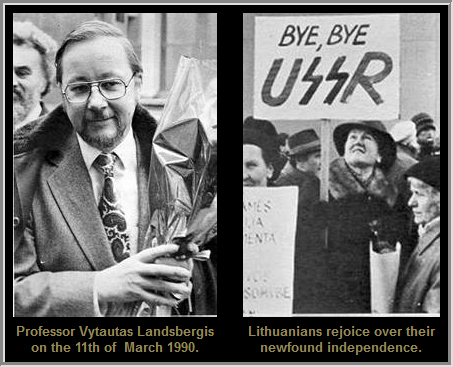
- Bookmark :
- Digg
- del.icio.us
- Stumbleupon
- Redit it
- Posted by - (0) Comment
Vilnius Mayor and
his various roles
We have in recent days had a heated discussion in our VilNews Facebook Forum on whether Vilnius Municipality and the taxpayers should pay for the startup of a new national airline of Lithuania. The debate has subsequently also discussed Mayor Zuokas’ handling of this and other issues, including his dealings with a certain taxi company here in town. Below some of the comments from our VilNews Forum on Facebook:
About the taxpayers

Kostas Cerskus I feel sorry for the tax payers!

Daiva Repeckaite I'm thinking of re-registering in Kaunas to channel my taxes away from Vilnius.
About the planned new airline – AIR LITUANICA

Eythor Edvardsson I think everyone talking here understands the need of good transportation to and from Lithuania. I also believe that airline is a part of a countries identity. People here should not compare to airBaltic who wanted to swallow the world. That is not the case here. Just basic needs as I see it. For lack of flights to and from LT, business suffers but mostly tourism. Lithuania has many great things to offer to the rest of the world, both culture wise as well as business wise.
People forget to calculate why multiple affects great communication brings back to the country as well. I have no fear that this will be going fine.
Why Zokas? This was, if I remember one of his promises before elected, to get things done that the government has been talking about for years with absolutely no success. I have more believe in this in his leadership than in governmental lead. Look forward to see this happen!
Eythor Edvardsson People are coming and going and flight transportation is as necessary as a bridge over a river. You know how much effort I made in this field to see exactly this happen. Who does it is not the case. Just that it is being done.
It is still in my fresh memory when Vilnius was the culture Capital of Europe 2009. What a great opportunity to show the rest of the world the richness in the country’s history and culture. Then, FLYLAL collapsed for all the wrong reasons. And thousands of people who planned to visit the city had no opportunity to do so. All the millions of litas, time and effort of people for years to prepare this cultural year went down the drain. Participation in between 20-30 travel exhibitions around the world were done for nothing. Because? No airline communications. Truly very sad. A great opportunity lost. Driving force in the preparation was the city of Vilnius with Zuokas in the lead. I believe this was hard for him and his people to see and experience. Again, I am happy for LT if this idea gets real wings

Aage Myhre I totally agree with you Eythor Edvardsson. To see a well-founded Lithuanian airline would be nothing but awesome. The question is whether Mayor Zuokas' initiative is a real thing, or if this is just hot air, or maybe something totally different is behind it all?

Sergey Kanovich Every businessman will tell you that the worst business to start is when it is created not out of market needs but out from artificially created interests - someone already mentioned "business" motive - national pride. Which is not a commodity I guess. This market is tough. And all complaining how "bad" is the transport to VNO is not really fair with this statement - you have every major European airline flying in and out. And RyanAir with Wizz Air taking the rest. It is inventing the bicycle. And a nice PR to someone who never had invested a personal penny from his own pocket to all failed projects he had ever initiated before. With what has been published so far this is born to be a failure. I feel really sorry for the taxpayers

Eythor Edvardsson We all know that Zuokas comes with ideas. Some of them materialise, some not. I do hope this one does. Whether there is something ''behind'' this, I cannot see what at this moment. If so, then that will float up one day.

William Adan Pahl A good half the major cities in the USA are in a battle against corruption. Certainly the number is higher worldwide. Las Vegas is a testament to this historically. Before I read up on it will jump on the pro side of this argument in favor of the airline.

Aage Myhre I totally agree with those of you who think that Lithuania should have its own airline, although I personally believe a professional pan-Baltic company, without interference or ownership from the three governments, would be better. Let me give you the example of Norwegian Air Shuttle, which was started by an entrepreneur and a group of investors exactly 10 years ago. Zero governmental participation! Today, this airline is about to become Scandinavia's largest, number 9 in Europe, and in stark contrast to state-owned Scandinavian Airlines having good profits year after year!
See: http://en.wikipedia.org/wiki/Norwegian_Air_Shuttle
![]()
Mayor Zuokas is no Mother Theresa

Sergey Kanovich any "national" mega idea fix is used to drain monies out of the budget (minus 1 billion Lt). That is why I am bit surprised that the driver without a car is paid merely 30,000LT month to make himself busy with trying to prove to 0'Leary that he is completely stupid and is unaware of hidden market possibilities of LT market... The ideas have a price for which he never paid. The price of bad ideas is always higher than the price of good one

Eythor Edvardsson Who the MD is I do not know. But for the right person in this case, 8500 EUR monthly salary would not be a crime.
Sergey Kanovich, when you talk hidden market possibilities, is it something you would like to share with us?

Sergey Kanovich Not a crime??? From a municipal budget with MINUS 1 billion LT that kind of salary is paid to a general without the army? This salary is an overkill in LT by all means. It is immoral to start with. Now, imagine that Reykjavik municipality instead of bringing roads to normal, renovating schools and hospitals etc, etc. having a budget deficit of that scale goes out and tells its citizens - you know what, we will fly you. You will be proud and you will pay for your pride. The rest priorities will wait. I wonder how long Reykjavik's or any other cities mayor would last after such statement. It is a scam. By hidden market possibilities I meant that there are none, because business is driven by market needs. There is no need in this airline. It will not be able to compete. I am sorry, it sounds like a decision to build a copy of Egyptian pyramids which will steal stupid tourist from Egypt.

Daiva Repeckaite A year ago or so, Zuokas promised to pick two homeless men in a shelter and lift them out of poverty. We've never heard of the men again (oops). Otherwise he has a very clear direction - further discriminate and ghettoize the city's poor and create a glossy city for the rich. You might say it is not a crime to prioritize the rich. But public sector redistribution is not necessary for this. The rich can take care of themselves. The purpose of public sector is to have roads, schools and decent living standards available for all.

Eythor Edvardsson Well, we all know Zuokas is no Mother Teresa and never will be.

Daiva Repeckaite Public services are not a charity! It's a government's duty. In 2009, the Conservative-led municipal gov't commissioned a study to find a solution for the Roma housing problem. They considered distributing vans, which would have better sanitary conditions than currently available. After the elections, the Zuokas-led municipal gov't seems to have ditched the study, and Zuokas personally supervised demolitions of the housing that the Roma currently use, in attempts to 'clean' the land before investors are expected to flock there following IKEA's arrival. The airport, btw, is also in the same territory. Not a single public kindergarten was established to meet the ever-growing demand and manage oversubscription. The municipality's lack of interest in urban planning left real estate developers building crammed neighborhoods without schools, parks or even sidewalks (we will see the effect of this in 5-7 years). So, do your basic duties before developing 'ideas'.

Eythor Edvardsson to Daiva Repeckaite: If this ''slice'' is for me, I am not here to stand up for Zuokas in his work. That he can do himself. Again; if for me, you are twisting my words. I come from a country of a strong welfare and I know the meaning if it for a healthy society.
Urban planning and planning in general has always been a mystery to me in Vilnius. It has lead to a chaotic urban areas and I totally agree, will cause problems in future. This city is not growing in a healthy way planning wise.
AIPORT TAXIES

Ulf Hallan Let me add on another perspective. Zuokas has so far started a new taxi company in Vilnius an now wants into the airline competition. What happens to those who actually make their living from this business when they get competition from state or city money? What may we expect next? Vilnius Municipality retail chain? Beauty saloons? Vilnius City Bank?

Daiva Repeckaite Regulations for taxi drivers became much stricter simultaneously. It's true, not all taxi businesses are transparent, but individual drivers barely make a living unless they work a crazy number of hours. When Zuokas taxi was introduced, more meticulous reporting and taxation rules fell on the heads of private businesses. Zuokas may be no Mother Theresa, but he'd better not be Kim Jong-il either.

Eythor Edvardsson No one argues about priorities even though I do want to see a national airline carrier. I will admit that things I am reading here do not look nice at all. This taxi business is at top of my head now because I just arrived back to Vilnius.
I called a taxi from the plane as I was used to do. When the taxi came he drove in circles until he managed to ''steal'' an opportunity for us to jump into the taxi at a dark spot by the airport terminal. So now it is a crime not to take the taxis that are waiting outside the terminal?
- Bookmark :
- Digg
- del.icio.us
- Stumbleupon
- Redit it
- Posted by - (0) Comment
Spring in Vilnius!
It is 8th of March, the International Women’s Day and the beginning of spring in Lithuania. Still snow and ice many places, but the melting process is now obvious. Spring is here!
Photos: Aage Myhre
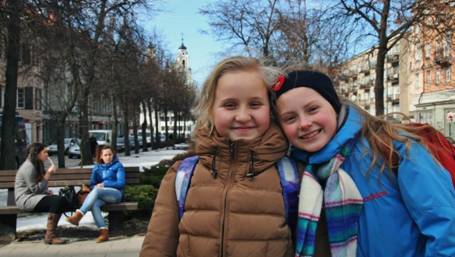
Two young representatives of the world’s women,
in Vokiečių g. in the heart of Vilnius Old Town.
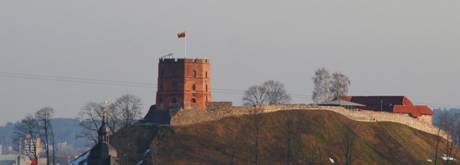
It's starting to turn green on the slopes around Gediminas' Tower.
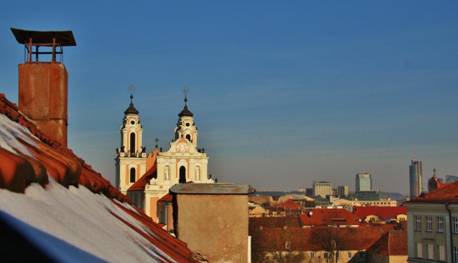
The danger of avalanches from the old town roofs is now over.
Here a rooftop views of St. Catherine's Church and the
Europa Tower on the other side of River Neris.
- Bookmark :
- Digg
- del.icio.us
- Stumbleupon
- Redit it
- Posted by - (0) Comment
Spring in Vilnius!
It is 8th of March, the International Women’s Day and the beginning of spring in Lithuania. Still snow and ice many places, but the melting process is now obvious. Spring is here!
Photos: Aage Myhre

Two young representatives of the world’s women, in Vokiečių g. in the heart of Vilnius Old Town.

It's starting to turn green on the slopes around Gediminas' Tower.

The danger of avalanches from the old town roofs is now over. Here a rooftop views of
St. Catherine's Church and the Europa Tower on the other side of River Neris.


















- Bookmark :
- Digg
- del.icio.us
- Stumbleupon
- Redit it
VilNews e-magazine is published in Vilnius, Lithuania. Editor-in-Chief: Mr. Aage Myhre. Inquires to the editors: editor@VilNews.com.
Code of Ethics: See Section 2 – about VilNews. VilNews is not responsible for content on external links/web pages.
HOW TO ADVERTISE IN VILNEWS.
All content is copyrighted © 2011. UAB ‘VilNews’.

 Click on the buttons to open and read each of VilNews' 18 sub-sections
Click on the buttons to open and read each of VilNews' 18 sub-sections 






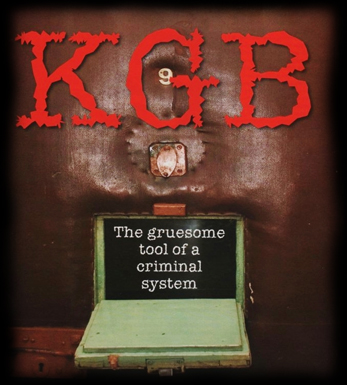
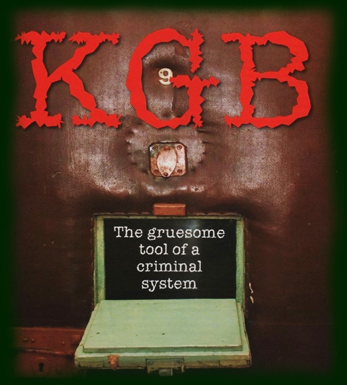
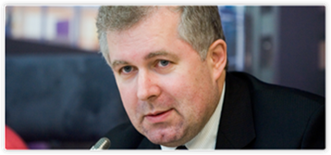






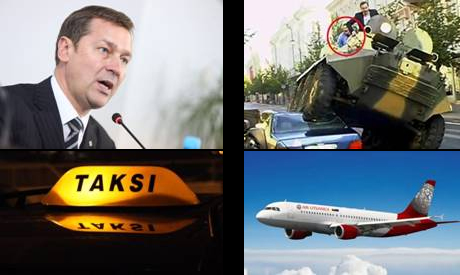
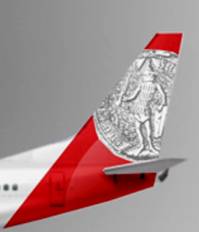


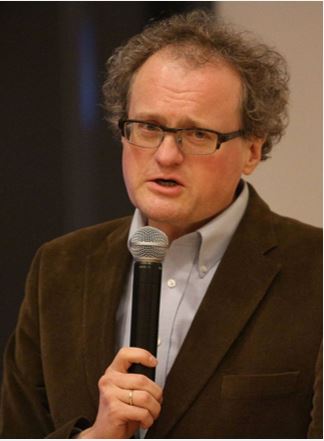

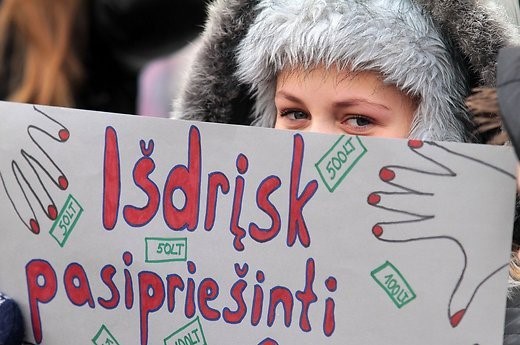


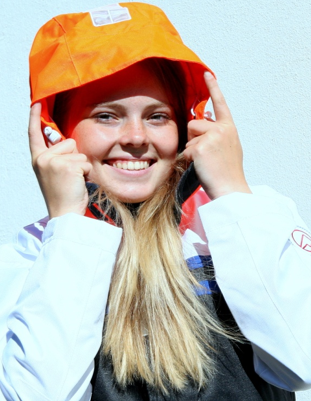
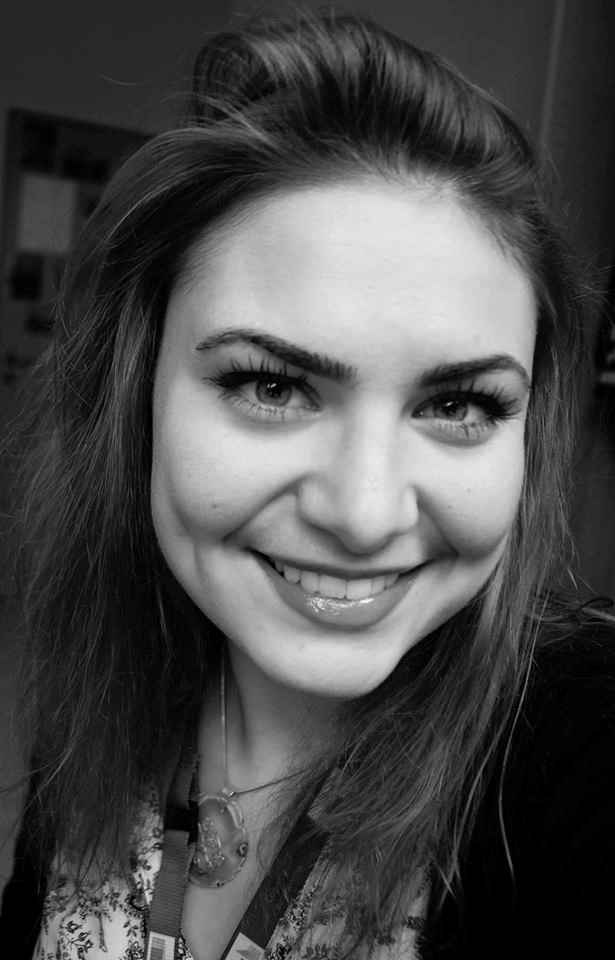

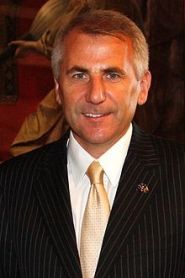
.jpg)
